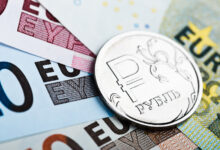
The Russian ruble slid to a new 16-month low against the dollar this week

© Getty Images / tashechka
The depreciation of the Russian ruble in recent weeks has placed it among the three worst performing emerging-market currencies, alongside the Turkish lira and the Argentine peso, Bloomberg reported on Thursday, citing calculations based on trading data.
The Russian currency has been weakening against the US dollar since early June, when one dollar was valued at about 80-81 rubles. Earlier this week, the ruble dropped to a new 16-month low at 98 rubles to the greenback, its weakest level since late March 2022, the first month after the start of Russia’s military operation in Ukraine. Overall, the ruble has weakened by about 24% against the dollar so far this year.
The Russian central bank last week explained the weakening of the ruble was due to the changing foreign trade balance and low volumes of foreign exchange revenues sales by exporters. While the country’s imports have been on the rise, Western sanctions have prompted a decline in exports, which are a major source of foreign currency for the country. Combined with Russia’s efforts to switch trade with foreign partners to rubles and other national currencies, the inflow of dollars and euros to Russia began to drop.
The proceeds of foreign currency earnings sales by Russian exporters have also been much lower this year than in 2022. For instance, in July they amounted to $6.9 billion against $16.8 billion in the same month last year.
Bloomberg economist Alexander Isakov, meanwhile, suggested that the ruble’s depreciation also “comes down to capital outflow.” He noted that the government’s rising expenditure is boosting the demand for imports at a time when exports are falling, while households have been increasingly transferring money to foreign banks as ruble interest rates have failed to meet inflation expectations.
READ MORE: Russia and Qatar work on switching to trade in national currencies – envoy
However, Isakov predicted that the ruble could find more support in the short term if the central bank raises the key rate to 9.5% and the authorities cut back on spending.
For more stories on economy & finance visit RT’s business section




